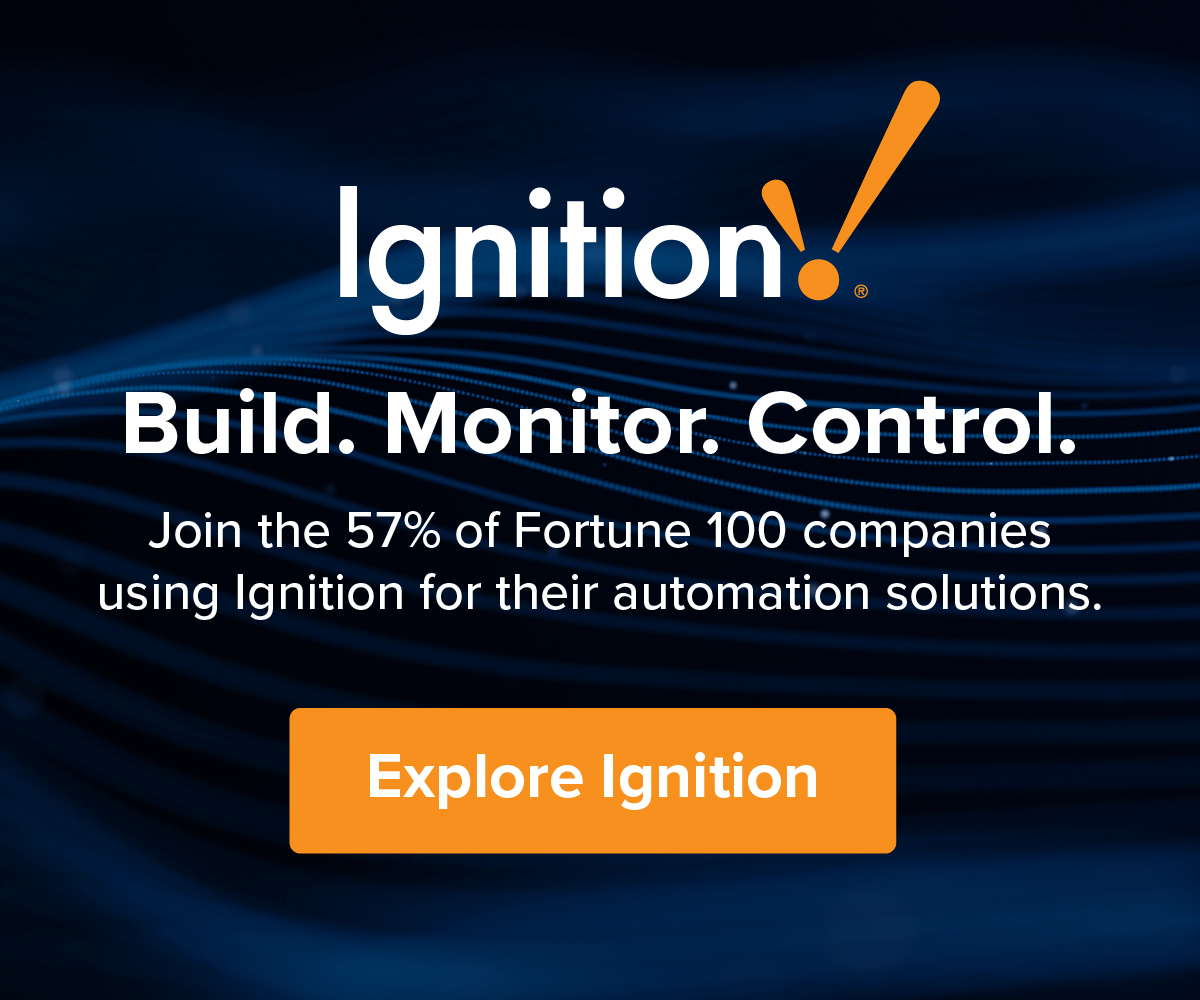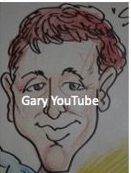
by Gary Mintchell | Sep 9, 2019 | Commentary, Marketing
Google and Other Misdemeanors
I have noticed that over the past few months, the number of people coming to my site via search engines, principally Google, has dropped by something like 40%. Curious, last weekend I took a little time and searched on about a dozen keywords that would be used in the industry.
Media sites just don’t come up in the searches. But what does come up are a ton of ads. The bulk of the rest of the links are suppliers. This is a big change over this time period.
Then I came across a tweet from Jason Fried, founder and CEO of Basecamp. He noticed that when he searched for his company, Basecamp, he came up number 4. The first three were ads from competitors who had worked the words base camp into their URLs or name in some ingenious way. And they had purchased the adwords that placed their ad above the real organic result. He explains all this in a podcast on Rework.
Back to my observation. I appeared seldom, except for my own domain name, and I never saw the major trade journals in the industry. Even ones named IIoT in a search of IIoT. Automation got three hits a couple of pages back on the keyword automation. But it should have had a bunch.
But suppliers are the most prone to buy adwords from Google.
If you think that searches are not biased and show you the most relevant to you, then you are years behind times.
I have noticed a similar effect in Facebook. Of course, its ad strategy came from Google in the person of Sheryl Sandberg. I did marketing for a small retail startup coffee house in Sidney, Ohio. Being local, I went to Facebook. I also spent a few dollars a month on ads.
When I ended the ad campaign, I was pestered with several notices per day about boosting a post for only $10, then for only $5. And our reach started dropping. Suddenly not everyone saw all the posts. The algorithm ensured that. When you’re in a small town with only about 1,000 person reach, you get pretty quick feedback.
Once upon a time, I mostly trusted Google search results. I use it for research constantly. Now, I’m not so sure about where to go for better results. Everyone is in such a rush to maximize ad dollars that they manipulate anything, including us, in the quest for eyes on ads.

by Gary Mintchell | Jul 10, 2019 | Commentary, Marketing, News
I receive enough feedback to believe that this is a well read blog in the industry. Not bad for what may be the only independent blog in the industry. Others I read are good (I continue to point readers to Jim Cahill’s Emerson Automation Experts as the model for doing it correctly) but they are company blogs. Nothing wrong with that. Just a different take. And I know of one that is a business in itself selling programs to companies and offering a different venue for company thought leaders.
Not only is the blog well read by engineers, managers, and executives, many marketing and public relations people come across this place, too. So, I get lots of pitches. In the IT industry, marketing has a category called influencers. Influencer marketing people know how to feed us information. Since everyone else in the controls and automation market similar to me is a publication, they tend to pitch me as if I were still at a magazine. Hint: I left that industry six years ago so that I could be my own person and be digital only. And, while I sincerely appreciate my sponsors and run ads for them, the business model has not been to make a majority of income from those. That is my financial foundation. Over the years, I’ve traded my expertise and knowledge of industrial businesses for custom research, analysis, and consulting.
With that as a background, the following is a general note for all the marketing and press relations people who stumble across my writing. I love you all, and I appreciate the work you do. I’m just a little different (well, a lot different).
I write a blog. There is no editorial calendar or “special issue” designed to attract advertisers. I’m interested in things I can think about. And I write everything–no contributed articles. It may be news, a tech trend, a significant new product or perhaps acquisition, and the like. It may come from press release or interview or something I see on the web. As the “connection” part of my blog name (have it because I could get the domain name, of course) implies, my interest is connecting—things, people, companies, ideas.
So, just feed me. If your CTO or someone in that office has something to say, ping me. I’ll take a look at a press release. If I can glean something out of the ordinary, I’ll use it to riff on. Otherwise, I am hungry to learn what is happening in the industry.
Supposing I have read a release. If I were still in the magazine business, we would have taken it verbatim, posted it on the Web, and then inserted it in the print magazine. The sales person would send a note to the marketing person notifying them that we were covering ABB, and by the way, want to buy an ad. Nothing wrong with that. It’s just a different business model. And one that is increasingly tough to sustain.
For me, this tidbit of a press release leaves me hungry to know more. I’d love a little more detail. I’m sure there must be an Internet of Things angle. Then rather than just calling out the product name, I’d love to know something of the hardware connections throughout the system. I’d love to know more about the analytics—is there ML involved that builds on the accumulating date for example?
I like to teach people considering a project something about what is involved in researching, designing, and implementing a system. Many times I have fielded inquiries from executives with just that question. And then, I would have a value-add and the company would show real expertise. I realize that this means more work for the marketing and PR teams. I sympathize. However, setting up a 30-minute interview would pay off for you, me, and the thousands of readers who stop by here.
Thanks for listening.

by Gary Mintchell | Sep 1, 2017 | Marketing, News
Happy Labor Day
Monday is a holiday in the US. We’re supposed to take the day off and have a “last day of summer.”
I wound up being like a European and took about half of August off. Almost two weeks pretty much off the grid. Then a trip to Foxboro. And as always in August and September, I am up to my ears trying to find referees for soccer matches.
Houston
I’m having difficulty digesting all the devastation in Houston and the Texas coast. As I write this, the remnants of Harvey are beginning to reach Ohio. Looks like where I live it too far north. There are years we’ve been drenched by hurricane leftovers.
But 50 inches (1.27 meters) of rain?
I was helping organize a meeting at the end of September in Houston at BP. Needless to say, that meeting will now be November or December.
Marketing
Bruce McDuffee wrote recently about a new ebook he has published for all you marketing types reading this blog. He specializes on helping companies market in the manufacturing space. This is a difficult proposition because people come into marketing from different paths in manufacturing than in consumer goods. (And yes, I owe him a long overdue guest post.)
Check out this free eBook.
A company’s website is its virtual storefront. Whether you’re looking to build your first website, or if your existing site just isn’t getting the traffic or leads you were hoping for, you may wonder what it really takes to have a great website.
This eBook offers 25 tactics to drive traffic, increase leads, and get more sales.
Here’s what’s covered in this 53 page eBook:
- Get found online with SEO and a strong underlying website structure
- Design for usability
- Content that engages, brings people back, and gives your firm credibility
- Bottom line conversion tactics
Thinking like Einstein
I subscribe to a site called “Big Think.” Lots of interesting ideas served daily.
Perhaps you knew that Einstein figured out the principles of Special Relativity and General Relativity and gravitation through the use of “thought experiments.” It was an exercise in imagination. After his insights, he was able to go back and work out the math (which is fascinating).
In this recent article appeared this thought:
How can you utilize Einstein’s approach to thinking in your own life? For one – allow yourself time for introspection and meditation. It’s equally important to be open to insight wherever or whenever it might come. Many of Einstein’s key ideas occurred to him while he was working in a boring job at the patent office. The elegance and the scientific impact of the scenarios he proposed also show the importance of imagination not just in creative pursuits but in endeavors requiring the utmost rationality. By precisely yet inventively formulating the questions within the situations he conjured up, the man who once said “imagination is more important than knowledge” laid the groundwork for the emergence of brilliant solutions, even if it would come as a result of confronting paradoxes.

by Gary Mintchell | Aug 14, 2017 | Marketing, Technology

(Photo by Alberto Brea)
Technology isn’t the business disrupter. How we use technology is. I was reading the marketing blog of Bryan Kramer, whom I’ve met at various Dell Technology events. He posted this photo thinking about marketing and business.
Look at our business in industrial automation in the USA. Everyone complains about Rockwell Automation technology. Everyone (almost) uses it. Companies spring up with a new product. “It’s a great new technology. Blows Rockwell out of the water,” they say. Without debating the merits of technology, I always ask, “How will you sell it?” It’s not the technology only–it’s the business model.
I had a boss one time who kept wondering why our PC board wasn’t selling like Apple Macs. We had good technology, but it was getting old quickly. And Jobs found a market and a way to reach it. A cult following (I say as I type this on an iPad, checking in with my iPhone, with my MacBook Pro sittting at home not along on this trip).
Technology is a great thing. It’s not a recent phenomenon. Humans have been creating new technologies for millennia. What we need to do is contemplate the business models that make technology useful. Something that makes lives better.
Someone asked recently what I look for. Well, it’s cool new technology (which I love) along with some interesting use cases that show how people and businesses benefit.
It’s not the technology that disrupts. We have to train our eyes to see past the glitter and into the heart of the matter.

by Gary Mintchell | Jul 25, 2017 | Marketing
Would you be a good company spokesperson?
It is hard to believe, but I’m closing in on 20 years in this writing gig. Four different companies, but the same me. Media people have connected me with a variety of company spokespeople during those years. Some of them are CEOs, while some of them are technical people.
Sort of like my friend Jim Cahill of Emerson Automation introduced me to an “extroverted engineer—one who looks at your shoes when he talks”. I sympathize with that description.
Still, media relations people probably live in fear of the person who stumbles over words, forgets points, makes silly or offensive asides, and generally embarrasses them.
My friends at TREW Marketing wrote a handy blog post on the subject. I recommend reading it whether you are choosing your next spokesperson or whether you are preparing for the next step in your career.
https://www.trewmarketing.com/smartmarketingblog/seven-characteristics-great-spokesperson?utm_campaign=Smart%20Marketing%20Blog&utm_source=hs_email&utm_medium=email&utm_content=51050421&_hsenc=p2ANqtz-9Y95tl8n658Azre1Vpzx-CvnaGEg5JqDIpSO9bSybZCI_DcXvE0iLeSZdZnG0YEXMv8ydeLlUSBhNEPIG6OOfBPaH15s7eLi3Q1xnLffTYM69WdTQ&_hsmi=51050421
Here is a taste of what you’ll see in the blog. I hope it’s enough to make you read the whole thing. It’s short and not painful.
1. Knows the Audience
When speaking to products, technologies and your expertise, it is important that you keep the audience in mind. While your wealth of knowledge is a key strength, it must be communicated effectively to be impactful.
2. Captures Attention
Companies (including your competitors) approach editors every day with coverage ideas, and editors must choose which ideas appeal most to their readers. To receive coverage in a publication, effective technical spokespeople must first capture the attention of the editor and draw them in to the story you’d like to tell.
3. Helps the Editor Draft His or Her Article
As an editor conducts a press meeting, they’re gathering information and often deciding if and how they’d like to cover it. Because of this, the way that you present information can have a huge impact on what is written, and how your story is presented. A great spokesperson crafts and presents his or her story in a way so the editor has written the headline and outlined the article by the end of the meeting.
4. Adjusts
As much as you think your story is great, sometimes people aren’t interested. At TREW, we have had editors be so uninterested, they have fall asleep! In this case, it is your challenge to adjust to make it even more interesting.
5. Speaks to the Industry
Editors serve as a trusted, third-party source of information to their readers, and they take this seriously. They want to create content that is helpful and impactful to their readers, and this often means addressing industry challenges from a broad viewpoint.
6. Use Real-World Examples
One of the best ways to validate your main message is by providing real-world examples. An example can be used as a bullet point in a story or as the meat. A great spokesperson comes prepared with real-world examples that support their key messages and are relevant to the audience.
7. Closes
Finally, a great spokesperson closes. After you’ve captured the attention of your press audience, outlined the article, provided examples and proven yourself to be a trusted resource, you should restate your key messages and secure interest.
[Back to Gary]
TREW adds several tips for each point. They are valuable.
A couple of my points:
If you are briefing the press, discover expertise. I devoted seven years to selling automation. I went into plants with customers, climbed over machines, suggested solutions. When someone came in to talk to me, they could have asked about experience and jumped to the meat. I tried to get a CEO of a smaller company to skip to about slide 45 in his deck because he was covering stuff I knew. This was not making me feel like he was an expert; it made me feel like he was a jerk.
Software people especially—forget the vague “benefits” discussion rather than telling me what it is you’re pitching. Yes, I’m sure you improve Total Cost of Ownership. How? Tell me when the customer takes delivery, what does she get? How does she install it?
Tell me something about the industry I probably don’t know. You look prepared and you help me look smart. And I need all the help I can get.
I hope when I meet you next time that you’re prepared, smooth, and informative!

by Gary Mintchell | Jul 6, 2017 | Leadership, Marketing, Productivity
What one thing could you do today, this week, this month, this year that would have the more impact on yourself, your company, your organization?
“One of the most empowering moments of my life came when I realized that life is a question and how we live it is our answer.” So states the theme of The ONE Thing: The Surprisingly Simple Truth Behind Extraordinary Results, Gary Keller with Jay Papasan.
Jim Truchard, known as Dr. T within National Instruments the company he cofounded, recommended this book last May when I was down in Austin at the company’s conference.
The journey toward the ONE Thing begins with a question. Keller says, “Voltaire once wrote, ‘Judge a man by his questions rather than his answers.’ Sir Francis Bacon added, ‘A prudent question is one-half of wisdom.’ Indira Gandhi concluded that ‘the power to question is the basis of all human progress.’ Great questions are clearly the quickest path to great answers.”
Keller calls this the focusing question. What are you trying to solve? Where do you want to go in life? What sort of person do you wish to be?
Find your question.
Understand and believe it
The first step is to understand the concept of the ONE Thing, then to believe that it can make a difference in your life. If you don’t understand and believe, you won’t take action.
Use it. Ask yourself the Focusing Question. Start each day by asking, “What’s the ONE Thing I can do today for [whatever you want] such that by doing it everything else will be easier or even unnecessary?” When you do this, your direction will become clear. Your work will be more productive and your personal life more rewarding.
Make it a habit. When you make asking the Focusing Question a habit, you fully engage its power to get the extraordinary results you want. It’s a difference maker. Research says this will take about 66 days. Whether it takes you a few weeks or a few months, stick with it until it becomes your routine. If you’re not serious about learning the Success Habit, you’re not serious about getting extraordinary results.
Keller talked about habits, something I’ve discussed regarding Charles Duhigg’s book, The Power of Habit. Or as Keller puts it, “People don’t decide their futures. They decide on their habits. Their habits determine their future.”
What one big thing will double my sales next year?
What one big thing will stabilize financing for my nonprofit?
What one big thing will be the service that defines our organization?








